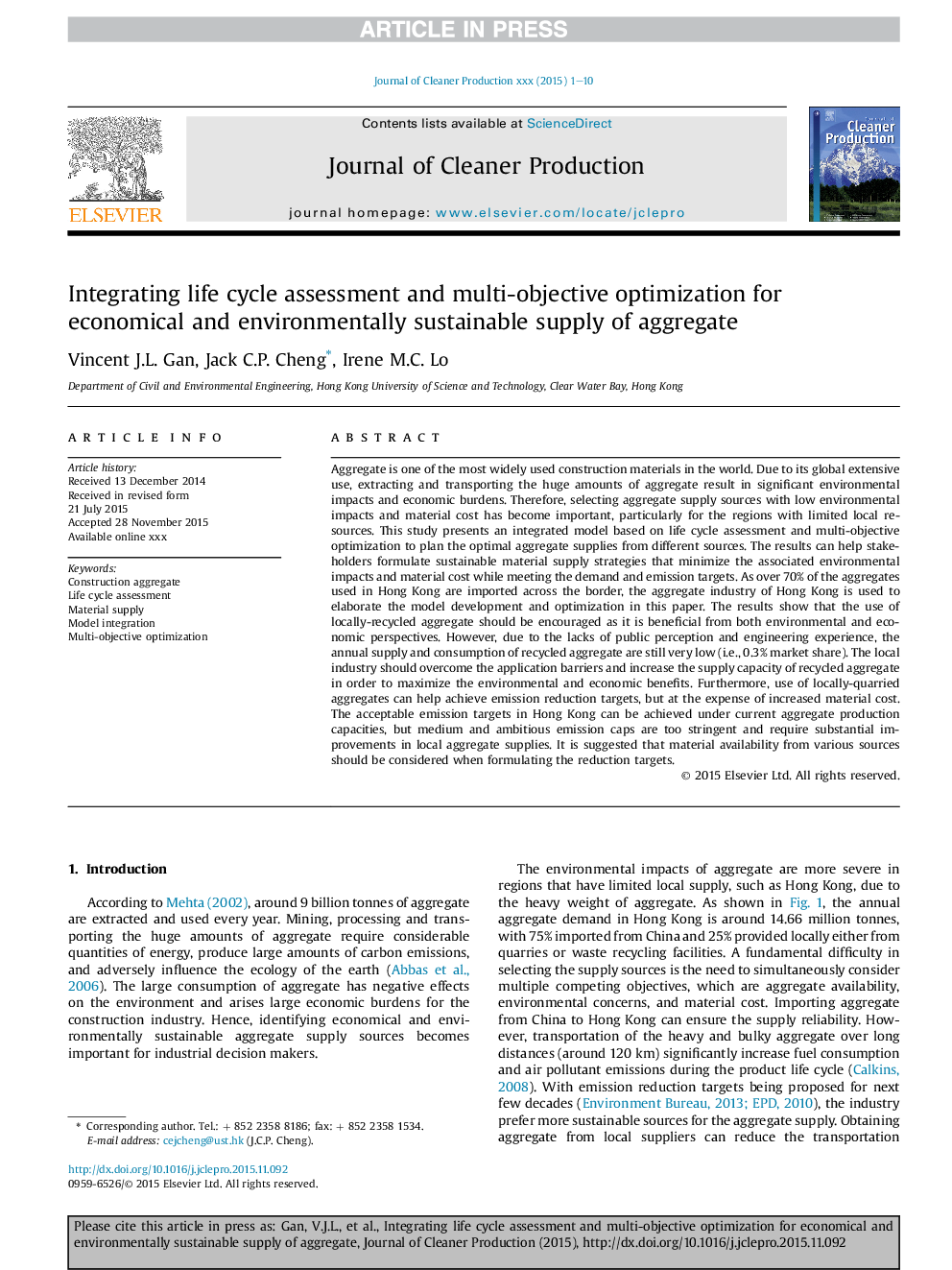| Article ID | Journal | Published Year | Pages | File Type |
|---|---|---|---|---|
| 8102817 | Journal of Cleaner Production | 2016 | 10 Pages |
Abstract
Aggregate is one of the most widely used construction materials in the world. Due to its global extensive use, extracting and transporting the huge amounts of aggregate result in significant environmental impacts and economic burdens. Therefore, selecting aggregate supply sources with low environmental impacts and material cost has become important, particularly for the regions with limited local resources. This study presents an integrated model based on life cycle assessment and multi-objective optimization to plan the optimal aggregate supplies from different sources. The results can help stakeholders formulate sustainable material supply strategies that minimize the associated environmental impacts and material cost while meeting the demand and emission targets. As over 70% of the aggregates used in Hong Kong are imported across the border, the aggregate industry of Hong Kong is used to elaborate the model development and optimization in this paper. The results show that the use of locally-recycled aggregate should be encouraged as it is beneficial from both environmental and economic perspectives. However, due to the lacks of public perception and engineering experience, the annual supply and consumption of recycled aggregate are still very low (i.e., 0.3% market share). The local industry should overcome the application barriers and increase the supply capacity of recycled aggregate in order to maximize the environmental and economic benefits. Furthermore, use of locally-quarried aggregates can help achieve emission reduction targets, but at the expense of increased material cost. The acceptable emission targets in Hong Kong can be achieved under current aggregate production capacities, but medium and ambitious emission caps are too stringent and require substantial improvements in local aggregate supplies. It is suggested that material availability from various sources should be considered when formulating the reduction targets.
Related Topics
Physical Sciences and Engineering
Energy
Renewable Energy, Sustainability and the Environment
Authors
Vincent J.L. Gan, Jack C.P. Cheng, Irene M.C. Lo,
